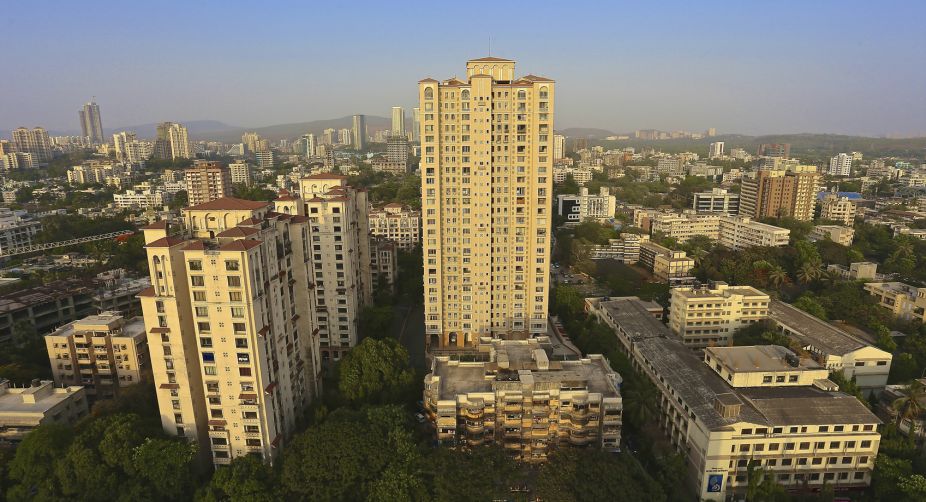It was a year when India’s realty sector was shaken to its foundation. A majority of the big, medium and small realtors across the country suffered from a severe liquidity crunch, stalled projects, elusive investors and buyers and a near-blanket stay on new projects — especially in the lucrative commercial and luxury housing segments.
How did demonetisation result in such a severe impact on this segment?
“Essentially, demonetisation completely drained the markets of liquidity, which is still continuing. Banks have all the money but it is not being lent out. Nor is it adequately compensated by alternatives like digital growth,” Niranjan Hiranandani, leading developer and Chairman of Hiranandani Constructions, told IANS.
Hiranandani, who is also President of the National Real Estate Development Council (NAREDCO), a powerful body of construction companies, admits that the realty sector took “a battering” at close quarters in the past 12 months. The high-investment construction industry was the worst affected.
The Goods and Services Tax (GST) and the Real Estate Regulation Act (RERA) have not helped either. If anything, they have come in as additional dampeners. The result is that the realty industry is passing through a phase where it seems to be all decked up and having to go somewhere.
Hiranandani said that, on an average, around one-third of the realty market was down nationwide, with the impact even higher in the north and the east, even as the cash crunch continues. The realty sector operated on the basis of unaccounted wealth, which may have taken a hit.
Also, the sector was largely unregulated, allowing builders to delay projects at their whim, and investing money raised from customers in other projects or land banks. RERA is expected to change all that, with strict penalties for violation of construction norms or fund use.
Jaxay Shah, President of the Confederation of Real Estate Developers Association of India (CREDAI), is quite upbeat about the changes that have spelled doom for the sector he is in. “Some of the most revolutionary reforms such as demonetisation, RERA and GST have proved to be a ‘naya daur’ or a new era for the realty sector,” said Shah, who is Managing Director of the Gujarat-based Savvy Infrastructure.
Shah told IANS that the policy and legislative changes were “ushering in a new wave of growth” by increasing transparency as well as home-buyer and investor confidence. “These will eventually help in a sustainable growth of the sector and the economy.”
Only agreeing partly, Hiranandani said there were some bright spots, even though most real estate markets were down. “The situation is bright in pockets; for instance, our Group sold the highest number of units in commercial properties in our career,” he said with a smile.
But he added that very few groups — like his own — managed to scrape through after the initial shocks which hit the economy like a ‘tsunami’.
Those representing the buyers fail to see bright spots in the sector.
Ravi sharma, National Secretary of the Confederation of Real Estate Brokers Associations of India (CREBAI), said while there was a more than 25 per cent drop in new property sales, the secondary or resale market saw a collapse of nearly 50 per cent, mainly because buyer confidence was rudely shaken.
“This has created a change in the level of buying. For instance, the middle-class is now opting for affordable housing, which was earlier being bought by lower-middle classes families. The luxury housing segment has practically crashed in Maharashtra, Tamil Nadu, Kerala, Karnataka, Telangana, Andhra Pradesh, NCR and other major markets,” Sharma told IANS, adding that the situation was likely to become worse in the coming months.
Already, he said, there were market rumours that cash component in deals was making a comeback in substantial proportion as many cash-starved builders and developers were desperate to meet their commitments in the face of new regulations.
Although there’s a substantial drop in interest rates for housing, this has attracted only a small segment of investors (not buyers). He feels that potential buyers with spare resources were now diverting to the stock markets for better returns.
Sharma said the chances of a turnaround were low. Most developers were saddled with up to one-third in unsold stocks, blocking up huge investments. With nearly a 40 per cent drop in sales in the largest market like Mumbai, almost all the builders were facing a severe financial crunch. Many are thinking of shifting to low-cost housing and to construction in tier-3 cities.
He said buyers were looking for reduced rates and some developers were trying to dispose of their unsold inventory with discount. “But how long can this go on?” Sharma asked rhetorically.
Hiranandani says a silver lining is visible, but many problems need to be sorted out.
“For instance, many foreign investors who are keen to enter are waiting for the right time — GDP is down and the economy is not picking up, despite measures by the government. Once these are tackled, investor and consumer confidence would revive.”
Shah is confident that sentiments in the sector are reviving.
“The provisions designed to protect buyers — whose interests are at the heart of the reforms — are helping to streamline processes and facilitate a transparent ecosystem for all. We are witnessing an overall recovery of the sector,” Shah said.
That may be a tad over-optimistic, but every stakeholder in the sector may be looking out for the light at the end of what seems a long, dark tunnel.






